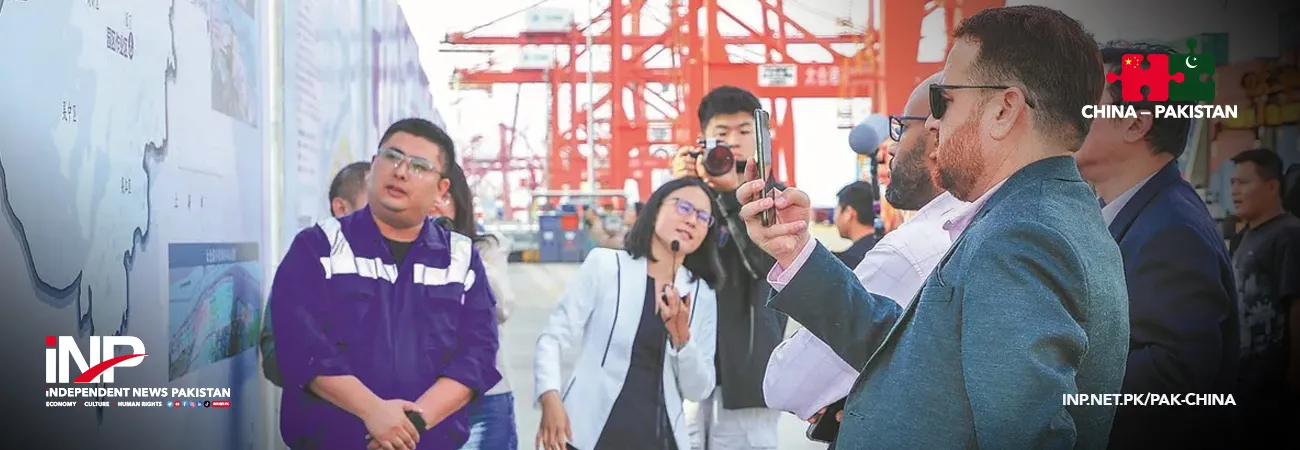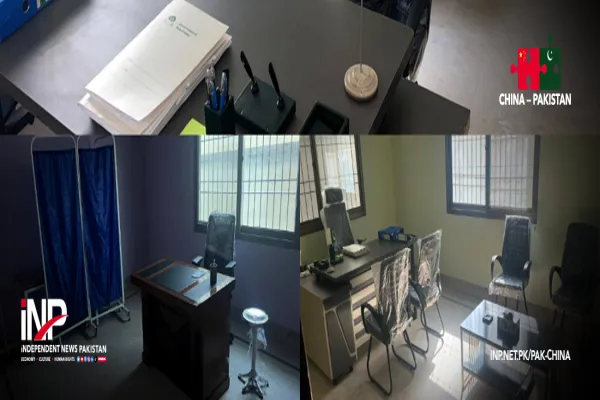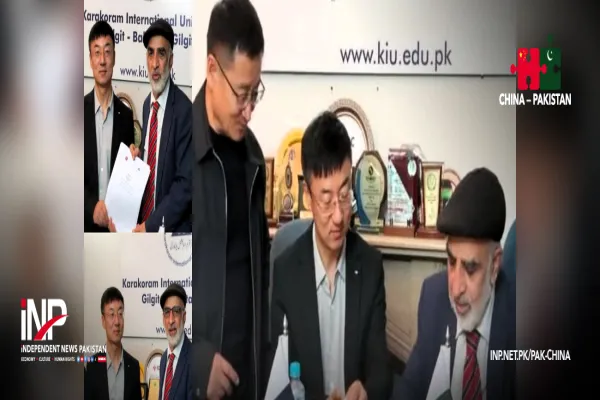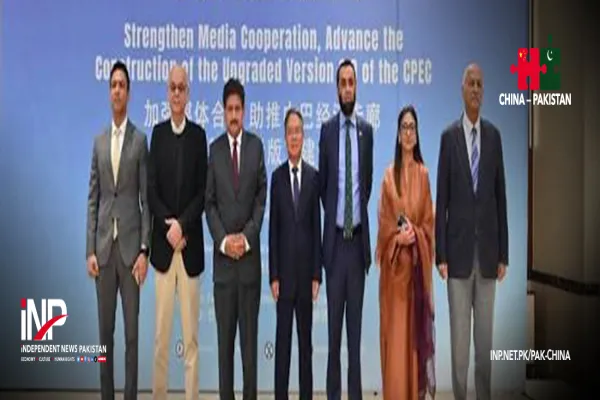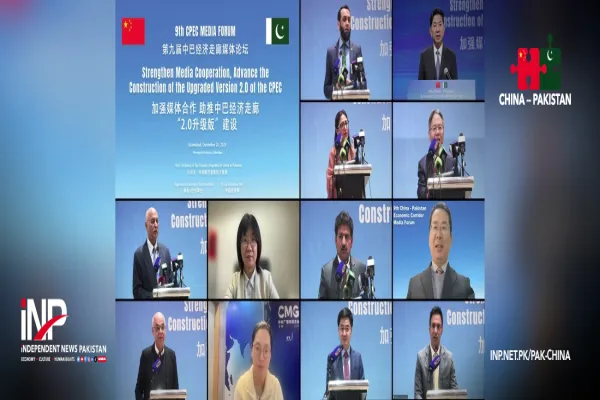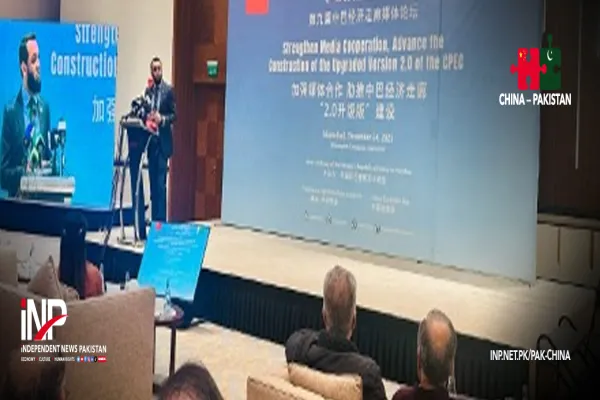i NEWS PAK-CHINA
Abdul Wajid Khan
This year marks the 10th anniversary of the Belt and Road Initiative (BRI) which was proposed by Chinese President Xi Jinping in 2013. Despites multiple challenges and hurdles, the initiative has so far provided tangible benefits and enhanced win-win cooperation between China and partner countries. During the first phase, the projects under BRI has revamped infrastructure, boosted connectivity and promoted social and economic growth and development of participating countries. According to the latest figures, so far 152 countries and 32 international organizations have formally joined BRI by signing more than 200 cooperation documents under the initiative. China has invested around $1 trillion in more than 3000 crucial projects. The data showed that under these BRI cooperation projects, around 420,000 jobs were created and nearly 40 million people were lifted out of poverty. China-Pakistan Economic Corridor (CPEC) which is a flagship project of BRI has seen significant progress during this period.
Some other flagship projects of BRI included the China-Laos Railway, China-Belarus Industrial Park, Hungary-Serbia Railway, and the Jakarta-Bandung High-Speed Railway have been successfully completed which indicates great headway towards formation of a community of shared destiny for the mankind. Hence, these results have shown that BRI has produced concrete benefits to China and the participating countries. Due to the wide participation, the BRI has been successfully extended from Asia, to Africa, Middle East and Latin America. On the occasion of the 10th anniversary of BRI, multiple important national and international level programs are being held in China to commemorate the successful completion of first phase of BRI. China Daily which is amongst the largest English newspapers in China with cooperation of Jiangsu’s provincial government has recently arranged a media trip for foreign journalists form different countries including Pakistan to learn about Jiangsu’s rapid economic and social development and its contribution for BRI during past ten years.
Journalists visited most vibrant cities of the province including Nanjing, Yangzhou, Lianyungang and Taicang. The trip provided deep insight about Jiangsu's historical and cultural heritage, advancement in high-tech industries, important ports and green development. Jiangsu is a strong pillar of China's economy as it is located in Yangtze River delta region which is also an important part of BRI. It is also a cradle of ancient civilizations, a hub of agriculture production, and transportation with biggest modern multi-model automated international ports located in Taicang, Lianyungang, Nanjing and other cities. Jiangsu has also played an important role in promotion of economic and trade relations during the first phase of BRI and achieved tremendous achievements. Jiangsu has obtained great strength in advanced manufacturing sector particularly in high-tech industries. According to the official data, the Jiangsu's GDP for 2022 surpassed to 12.29 trillion Yuan and its GDP per capita reached RMB 144,000. The industrial base was upgraded and the industrial chain comprehensively modernized.
The added value of the manufacturing sector accounted for the highest proportion of the region's GDP in China. The number of national advanced manufacturing clusters ranked first in the country, while the total number of high-tech enterprises reached to 44,000.

So far, the province established economic and trade relations with more than 230 countries and regions in the world. 392 of the world's top 500 companies have invested in Jiangsu, and the total number of market entities reached 14.119 million. The modern service sector accelerated its development, accounting for 50.5% of GDP. Jiangsu, being an intersection point of BRI, is constantly striving to achieve win-win results with other countries and regions in a wide range of cooperation projects. The official data further shows that in 2022, the accumulative use of foreign capital reached US$ 30.5 billion, ranking first in the country. Jiangsu carried out 262 new investment projects in countries along BRI. The import and export value solely among countries along BRI reached US$223 billion, a year-on-year increase of 9.1% , accounting for 27.4% of the province' total trade. Jiangsu has actively advanced the construction of a land-sea corridor.
A total of ten100-million ton large ports were built and 75 international container routes opened. Jiangsu operated 1,973 train journeys to and from Europe and other parts of Asia in 2022, an increase of 9.6%. China-Kazakhstan logistics cooperation base and the Khorgos-Eastern Gate dry port became a dual hub on the new Asia-Europe land-sea combined transport channel. The province continued to deepen international cooperation on production capacity attracting countries along the BRI to set up more than 4,000 enterprises in the province while carrying out over 2,300 investment projects in countries along BRI. The Jiangsu Belt and Road Alliance for Collaborative Innovation and Technology Transfer was also established, and 29 overseas collaborative innovation centers were launched. Now in the second phase, Jiangsu will further increase its trade and economic relationship with BRI member countries. It is ready to help BRI member countries in modernization of their industrial sectors with the help of its high-tech industrial capacity.
As the BRI has entered into a crucial stage of 2.O, Chinese President Xi Jinping has announced that during this phase, the progress will made in the areas including digital economy, innovation and modernization, green development, capacity building and enhancement in people to people exchanges. So this is the important stage for the China and the member countries, because China is successfully transforming its system to digitalization and modernization by utilizing latest emerging technologies like cloud computing, artificial intelligence, cutting and big data. So, it will be a great opportunity for the developing countries like Pakistan to take benefit from China’s successful experience. The developing countries can also get robust and sustainable economic development by making progress in digital economy and modernizing their industrial base to increase their manufacturing capacity and exports by optimally utilizing opportunities under BRI.

Writer is a research scholar and working journalist based in Islamabad Pakistan. He can be reached at abdullwajidkhan786@gmail.com
Credit: Independent News Pakistan (INP) — Pak-China



